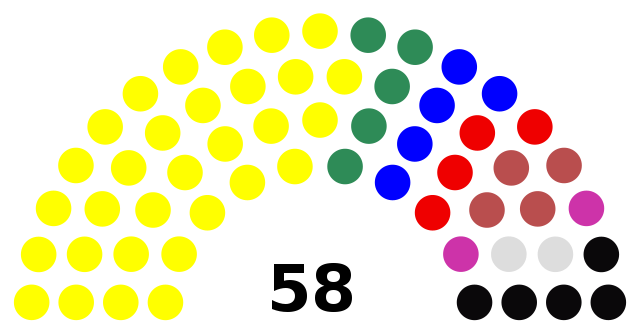Along the smiling coast of Africa, nature abounds and all sorts of sights, smells and sounds reveal the beauty of harmonious living. One of these is the sound of marbles clinking against metal containers—a unique expression of democratic choice in the Gambia. In this west African country, votes are not cast by the push of a button or the filling of a ballot, but by the dropping of a marble in favour of the preferred political party.

Polling officials show the marbles that are used to cast votes in The Gambia's presidential elections in September 2006. Photo: Commonwealth Secretariat/Flickr
And yet it’s no child’s play. Marble voting in the Gambia began in 1965 and was introduced by the British in response to incredibly low literacy levels in the country. Despite cries from conniving opportunists and running candidates, the five-decade-old method has continued to be in use in the land till date. The simplicity of the process allows an honest democratic practice to prevail and checks the possibility of rigging and corruption. The count-the-marble system was what took the seat away from Yahya Jammeh, former President of the Gambia, after his 22-year reign of repression.

A representation of the distribution of seats based on colour (2017). Graphics by Panam2014/Wikimedia
How Does it Work?
Most of the electoral process is commonplace. The country is divided into zones called constituencies, and each constituency has its own voting centres. Citizens are allowed to vote only from their designated constituencies. An officer of the Independent Electoral Commission presides over the polling station to overlook the voting process. Each voter is marked on the finger with ink to ensure that no one votes twice.
Things change when one arrives at the polling booth. Instead of electronic voting machines (EVMs) or ballot boxes, Gambians are faced with metallic drums or containers with a hole on top. Set on a table, each container is marked with the colour, name and image of the political party it represents. The voter drops a marble into the container whose candidate they wish to support.

A Gambian man pauses before casting his vote in Serekunda, near the capital Banjul, during presidential elections, September 22, 2006. Photo: africanews channel/Flickr
At the end of the voting, counting begins on the spot. A counting box is set up which contains a square tray with holes. The marbles are emptied into these holes and numbers are tallied on the basis of counting. The process has managed to deliver transparency and build the trust of voters with its swift, out-in-the-open approach. While many have questioned the relevance of the dated method in the modern world, its uncheatable process and untainted results have kept the majority’s faith in the marble counting system. Since Jammeh’s defeat in 2016, the country has come a long way in its democratic journey with positive reforms improving the state of affairs and high candidacy opening newer options for citizens to choose from. The strange system of voting, though, has remained unchanged. The last marble voting in The Gambia was held in December 2021, when the clink of glass heralded the leadership of Adama Barrow as President.












Not so strange, really. This kind of voting goes way back. The Greeks voted using pebbles, psephos, hence the art of election divination is called psephology. The word ballot is derived the French 'ballotte', meaning small ball, as these were used in French elections.
ReplyDelete